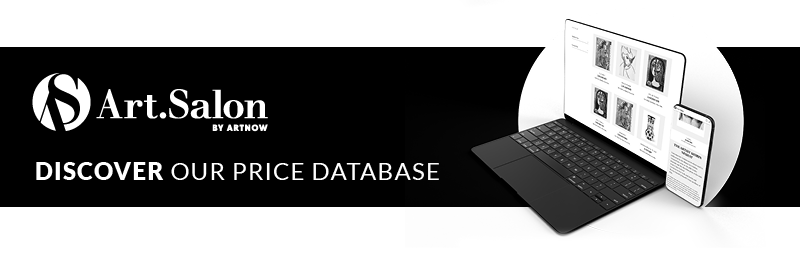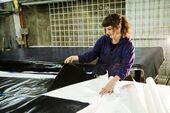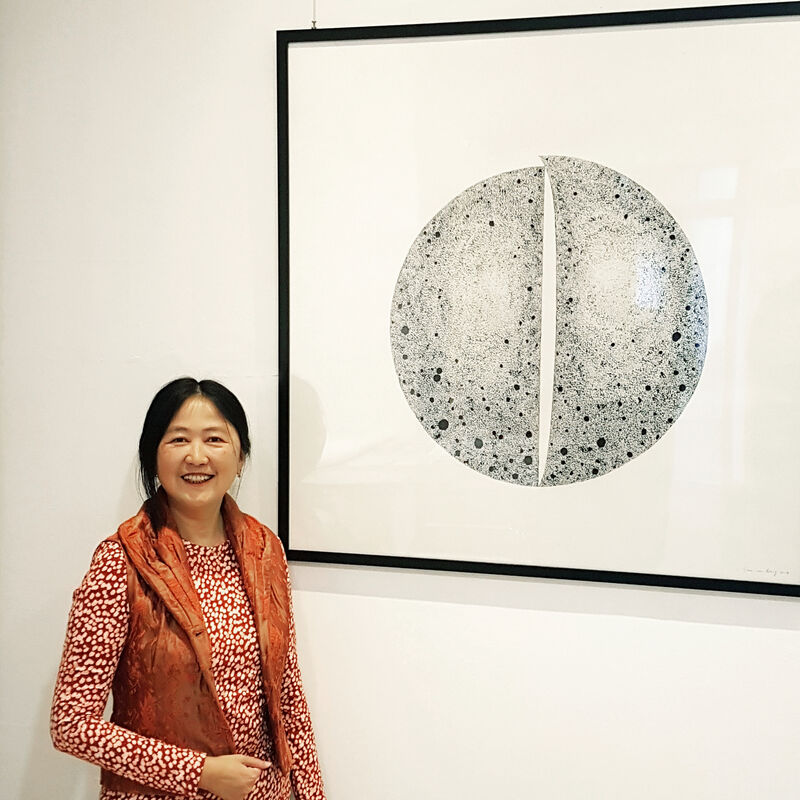
Songwen Sun-von Berg: »Art is my home«
The world's great cities are shaped by an ever-changing society, and the arts thereby function as a mirror of their changing inhabitants. In this interview series, we let three artists talk whose lives between cultures have brought out exciting artworks.

Few artists devote themselves as consistently as Songwen Sun-von Berg - whether on a formal or a philosophical level - to the question of what we understand by »Western« or»Eastern«. However, the artist, who was born in Shanghai in 1968 and now lives in Berlin, openly confronts the prejudices and obstacles with which this subject is often burdened. Rather, her works can be understood as an elegant play with these very expectations, in which the attentive viewer questions his or her visual habits. But for the artist, this is not the end of the story. Songwen Sun-von Berg goes one step further with her ink and oil paintings by developing a formal language that allows a universal view of things. She explains in the following interview what that exactly means.
How would you describe your art and why do you paint?
Let's take a picture as an example: From the outside you see the shape of the feather, but if you look more closely, you recognize the inner structure and realize that it is actually not a feather at all, but something completely different.
I have an exhibition going on in Weimar right now, and Prof. Kai Uwe Schierz was invited to talk about my paintings there. I am grateful to him for recognizing and analyzing this aspect of my art so well. He said: From a distance you see a feather, but if you look closely, there are only dots and tiny lineatures. In the end, it's not about depicting an object, but how things are connected in the world and give it structure. In his speech, he quoted Leibniz with his doctrine of monadology, in which he said: everything arises from the One and from it becomes more and more. It's the same with me: I start each painting with a dot and then I draw the reed pen until the ink is used up, then I dip it back into the ink and make the next dot and so it goes on and on. I was very moved by this speech, because I didn't know Leibniz's Monadology, but I know the teaching of Chinese Taoism and the saying of Lao Tse, which is the first line from his Taoism: the Tao gives birth to the One, the One gives birth to the Two, the Two gives birth to the Three, and the Three gives birth to 10,000 things. These 10,000 things are our world and our universe.
I really see an East-West correspondence in this, because ultimately it is the basic thought of humanity - whether in Asia or Europe, basically this is the same thought.
I also used to read books about ancient Greeks and there it also says: The world is created by the meeting and the movement of the smallest parts. This is the same in modern physics. I don't work on this idea scientifically, but I put it into a picture form out of my instinct. The dots and lines are connecting elements from which the picture grows until a contour emerges. But there is actually much more behind it. I use my visual language to be able to represent the world in which I live, because the basic principle is the same.
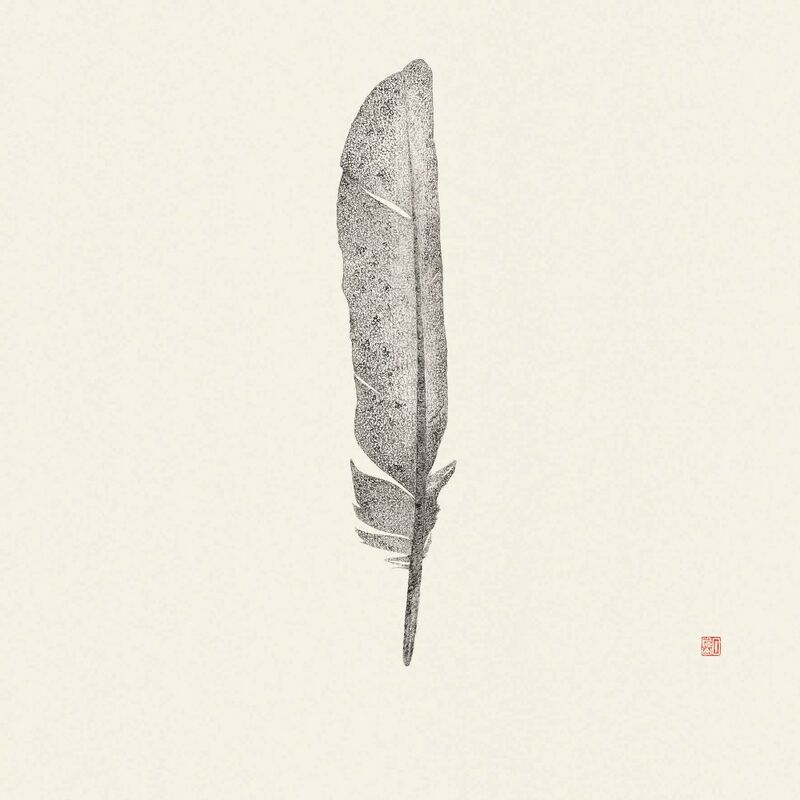
And what is the role of nature in this?
The very biggest. (laughs)
You had an exhibition in Chongqing earlier this year. Is your work received differently in China than in Europe?
Oh yes - definitely. I am very happy that there has been a positive development in the meantime.
I exhibited in China for the the first time in 2011 or 2012. At that time, my paintings met with great incomprehension. I exhibited one series of figurative and one of abstract paintings, and people told me that they didn't know anything like that and that it was very strange to them. Of course, the expectation in China is different than here. You know the typical landscape paintings, plants, flowers, birds....
At that time my gallery owner consoled me: until your paintings are accepted in China, you have to be patient for 30 years.
By the way, the reed pen is not Chinese, as you might think, but an ancient writing instrument. In China, they use the brush. I don't know anyone there who uses it yet, and it wasn't available for purchase there.
I thought that people in China would have more access to your art. You mentioned Lao Tse and Taoism in relation to your works...
My current visual language has emerged in 2012. Before that, I painted much more gestural or informal with ink. You can still see the calligraphic background, which I thought the people should understand better. But the visitors told me that it was still something different.
My fellow artists in Shanghai reacted very positively to me: »Great, this is something completely new!«
Other artists or visitors, however, expected a male artist with my painting style. I specifically told them before the exhibition that they should please not write Ms. Artist on the invitation. Because in Chinese there is not, as in German the female ending Künstlerin (artist), so you always have to write Ms. before the job title. I knew that hardly any visitors would come if one advertised the exhibition of a female artist.
Unbelievable! So you had problems with sexism?
Yes, very much. That was 10 years ago, but I've also heard snide comments from my colleagues over the years, like, »To sell your paintings better, you should paint more female subjects.«
So people in China have expectations about how women should make art?
Yes. That was a really tough moment and I asked the person who made that comment what he actually meant by female art? I was so angry that I said to him that he should never say something like that to a European woman. There is no male or female art here - there is only individual art.
I also think that one should not say something like that and I can't imagine how many women (not only) in China have to listen to these comments all the time.
But do you think the situation is improving a bit right now?
Yes, in the meanwhile there is a positive development. I exhibited in Shanghai for the last time in 2019 at the invitation of the German Consulate General and there was an Artist Talk - my first in China. That did a lot, because I noticed how it built bridges. I was asked what I wanted to express with my work and why I was not painting typical Chinese landscapes or flowers. After this conversation, my colleagues and friends came up to me - the same people who ten years ago spoke disparagingly about my art - and said that they were now gaining access to my art. And since that moment, I've been able to sell paintings in China (laughs). I'm so happy that I didn't have to wait 30 years, as my gallerist predicted. Last year I also exhibited with the German Consulate General in collaboration with a Hong Kong gallery owner in Chengdu and this year in Chongqing and there is really an interest in my work.
My work is already quite different compared to the European, as well as the Chinese artists. And it is very comforting for me that there is this development in China, that my paintings are more and more accepted and collected there.
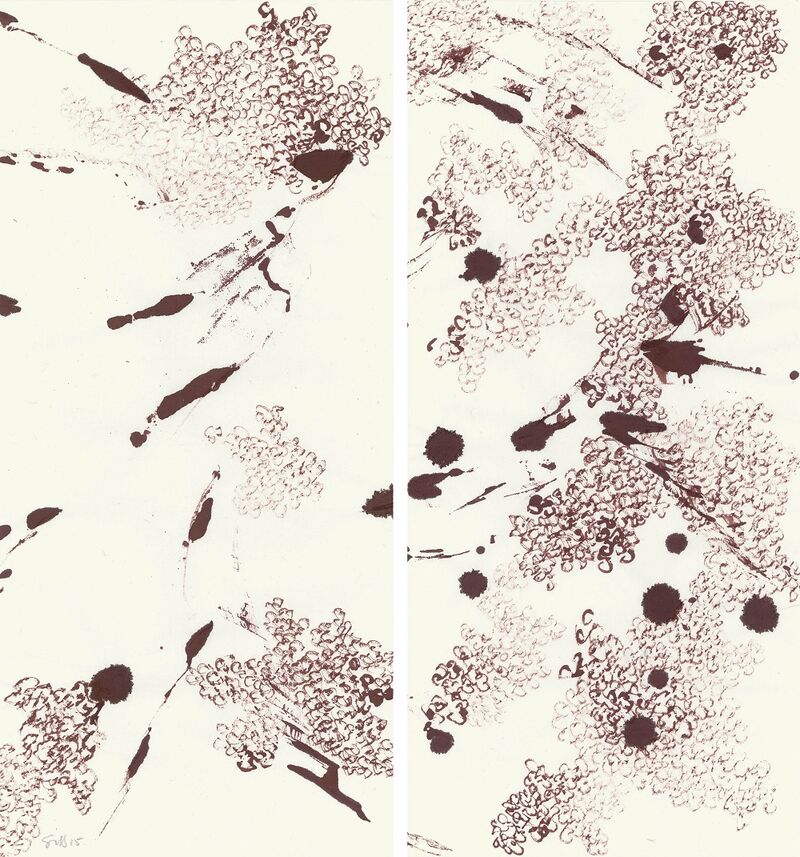
Do you actually have a goal in terms of how your art is perceived or what you want to achieve with it? One could say that you would like to see more openness in China for other topics, right?
Heinz Berggruen has said:»Pictures want to be an occasion for meditation and to increase the feeling of awareness of life«. I think the speed of life has increased so quickly and we are living in a very difficult time right now. With my paintings I want to create spaces to pause, which invite to find a little peace in everyday life.
For myself, working with art gives me a lot of strength and when I notice how it touches other people and brings them beautiful moments, I think that's great. I am happy when more and more people give me the feedback that my paintings do them good.
You've lived and worked in Berlin since 1991. What influence does the city have on the way you work? Does the environment play a role in your work?
Absolutely. Whenever I go out, I observe everything. I can't even listen to music while I'm doing it, because I need all my attention to capture the environment inside me. It's the same when I'm working in the studio, I can't listen to music either, because I'm so busy inside and visually with the creative process.
The environment here in Berlin is obviously different than in Shanghai. I've lived here for 31 years, which of course influences my paintings: I studied privately with Prof. Schiller for 5 years, then I was a visiting student at the University of the Arts for 2 years, and in the process I learned and absorbed a lot about European art history. I went to Villa Grisebach frequently for a while, where you can look at art in a very unbiased way. Everything is a learning process: the exhibitions, the museums are still important influences for me. I take in a lot of things consciously or unconsciously, and then they reappear when I paint. I can't control that at all.
Mark Terkessidis once wrote that people often have certain expectations of a person because of their origin. As if one had to represent a country or stand as an example for a whole culture. Being a representative for something undermines the individuality and the own (art) processes of a person...
Yes, exactly. It would be too one-sided for me to do only traditional Chinese art....
...You could never manage to carry an entire culture on your shoulders. That would also only serve certain clichés.
That's what I mean, too. And if I did, I would only import Chinese painting here. That is not my task either. I rather have the need to express myself as an individual.
My professor used to say, »Every tree is different, and we humans are different, too«. It is very important to me that I can express all the influences I receive from within myself.
Even today, people sometimes ask me if I have Chinese letters in my work. You can't really blame anyone for these expectations, especially when people know that I used to do calligraphy.
But these letters are so limiting - how many people here in Germany can read and understand the Chinese written language? It was a great motivation for me to form a visual language that all people could understand. That's why I got away from calligraphy at that time.
Speaking of calligraphy, I find it fascinating that you use red ink. Is that typical in traditional Chinese painting?
No, in China you typically paint with black. I found the red ink here in Berlin and this earthy, warm color spoke to me right away. But at first there was this pigeonhole thinking from the German side that the Chinese had to work with black ink. In 2015, I did a series in red for the first time, and fortunately it was well received.
I work a lot with the combination of ink and oil paint because the two materials have a connection to my personal history and, for me, symbolically create an East-West connection. Oil paint also has its own exciting presence with its brilliance.
I often hear ink and oil don't match at all, but with the right technique I can achieve a special expression.
Overall, I think there is a really good development for more openness in China as well as in Germany, which means that my art is also finding more and more friends.
I hope that things continue to develop in this direction and I am very optimistic that a change in thinking will happen. Even though the debate was actually already initiated in the 1980s and 90s in art and cultural history.
And the galleries play an important role in this, because through their efforts these artworks become better known. In addition, there is actually a change in thinking right now. Just 20 years ago, people pitied me, saying that as an artist from two cultures I was all torn up and that I must be having a very hard time.
...Instead of seeing precisely these influences as enrichment.
Definitely. Of course, one has difficulties in the first years of arriving and can also express them in art. But in the end it's an enrichment: you bring so much things together and can perceive them differently. I absolutely cannot say of myself that I am torn, but I find it beautiful to live in this enrichment and to be able to pass this on with my art.
On the other hand, the world is so complicated right now. I think culture is really something that connects and you can contribute to a better understanding between peoples through art.
Particularly as one can actually no longer speak of »German« culture. If you take the culture from Berlin as an example: here in Kreuzberg live mostly people who come from other cultures. So wouldn't that be typical of Berlin? With all these exciting cultures and biographies, what should one integrate oneself into?
Yes, when I speak of two cultures, that is actually quite limiting. When I travel to Spain, I naturally also absorb the Arab impressions from there and experience them as enriching.
That's why I don't like the word »tolerance,« for example, because I don't want to be tolerated. I would rather be part of an open and open-minded society where everyone can live together.
I have spent a long time thinking about the word »home« and I experience it in such a way that home is in the soul. The picture of me that the Museum of Asian Art has in its collection is called »Zuhause« (Home). So where do I feel at home (Zuhause) and where is my home (Heimat)? Ultimately, I found out for myself that I found a new home in my paintings, in my art. Being at home (Zuhause) is something physical: when I fly to Shanghai, I feel at home because that's where my Chinese family and friends are. It's not the place itself, but the people there that make me feel at home. And here in Berlin I also have my own family, circle of friends, colleagues. Now after all these years I can say that I also feel at home in Berlin. I have built up something with my art, I have arrived and through the pictures there is a lot of communication. Art has something very unifying.
The home (Heimat) is in my soul and I find it in my pictures.
Thank you, Songwen, for this exciting interview!
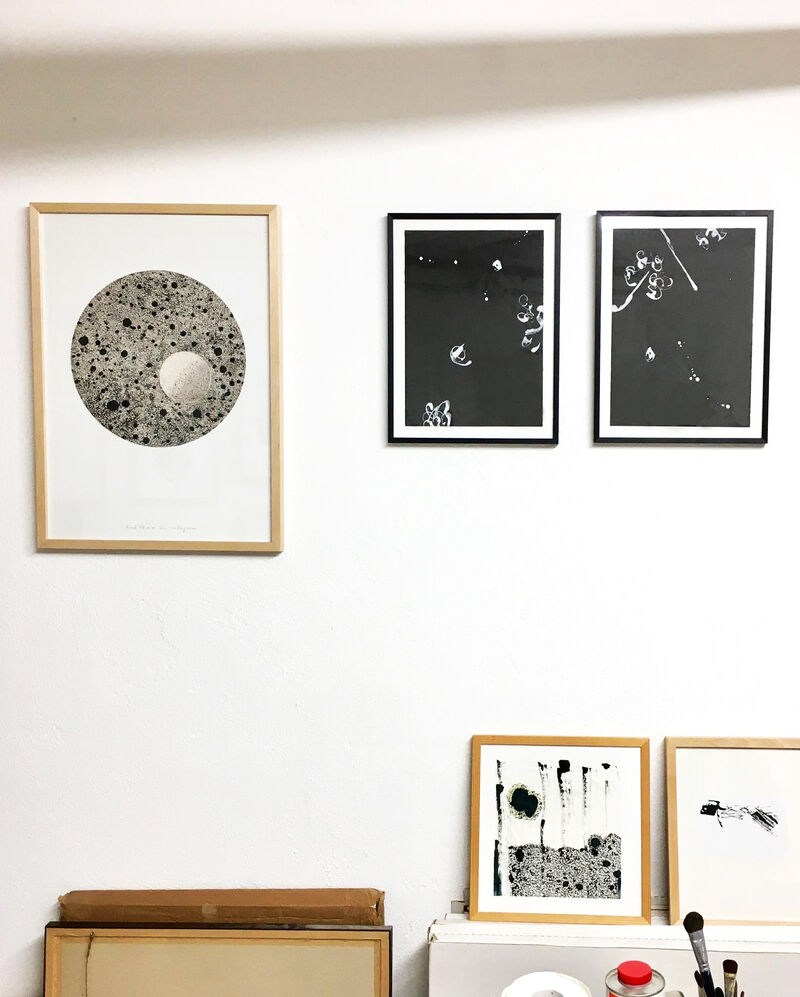
About Songwen Sun-von Berg
Born in Shanghai, China in 1968, the artist has lived and worked in Berlin since 1991.
In China she received training in classical Chinese calligraphy and drawing.
B.A. Mechanical Engineering in Shanghai, M.A. Sinology in Free University of Berlin, 2006-2011 private study of painting and graphic arts with Prof. Hans Schiller in Berlin, 2009-2011 guest study of fine arts at Berlin University of the Arts.
Her works can be found in renowned private and public collections, such as the German Foreign Office, the Museum of Asian Art at Humboldt Forum Berlin and the Hurun Art Foundation China.
Website: https://sunvonberg.de/
Instagram : https://www.instagram.com/songwen.sunvonberg/
Dive deeper into the art world
The materiality of color
Verónica Lehner literally brings color into space. By creating sculptures out of paint, she moves between the media of painting and sculpture. In an interview with Art.Salon, the artist talks about the spatial effect of color and why randomly found objects are an ideal basis for a work of art.
Staged Realities
For the first time in over 25 years, there is another major exhibition on Jeff Wall in Canada: the Museum of Contemporary Art Toronto is presenting over 50 works by the renowned artist in Jeff Wall Photographs 1984–2023. The exhibition runs until March 22, 2026.




